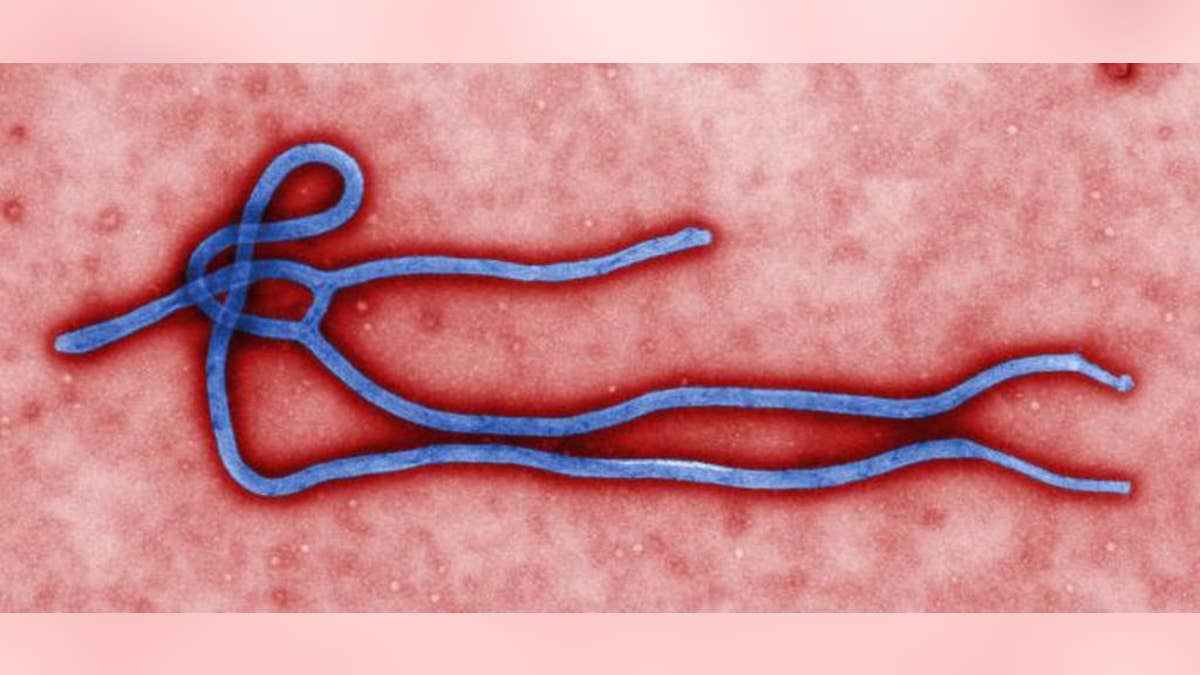
This photo provided by the CDC shows an ebola Virus. U.S. health officials are monitoring the Ebola outbreak in Africa but say the risk of the deadly germ spreading to the United States is remote. (AP Photo/CDC) (The Associated Press)
WINNIPEG, Manitoba – The Canadian government will review the use of a suit designed to shield laboratory workers from dangers such as the Ebola virus after an employee found a tear following an experiment, the lab's director said on Wednesday.
The worker at the National Centre for Foreign Animal Disease in Winnipeg may have been accidentally exposed to Ebola on Monday while handling pigs infected with Ebola in an experiment, government officials said on Tuesday.
The worker, whom Canadian officials have not identified, noticed a one-inch (2.5-cm) split in his suit's seam by the torso while showering on Monday afternoon, John Copps, director of the center, run by the Canadian Food Inspection Agency, told Reuters in an interview.
The review is part of its usual process following an incident, he said. The cause of the split has not been identified.
After realizing he may have been exposed, the lab worker met with supervisors and doctors and went into "self-isolation" off-site, where he is visited more than once daily by health officials, Copps said.
The lab handles pathogens requiring the highest level of containment, and outfits workers in the Chemturion suit produced by ILC Dover, which also makes space suits and products for aerospace and flood protection.
The suit is one of three models worn in such labs internationally, Copps said.
"This is the most robust suit on the market," he said. "It's a very rare event, and we make sure we check suits on a very regular basis to avoid this at all costs."
Copps said he was aware of one other seam splitting in a protective suit in the 18 years he has worked at the lab.
The blue Chemturion suits are made of a chlorinated polyethylene, or a type of plastic, designed to resist chemicals, according to the website of Delaware-based ILC.
ILC, majority-owned by private equity firm Behrman Capital, could not be reached for comment.
Ebola, which killed thousands in a West Africa outbreak in 2014, spreads through contact with body fluids and tissues of an infected person.
As of Tuesday, the worker was not exhibiting Ebola symptoms, according to health officials, but he received an experimental Ebola vaccine.
The Winnipeg animal disease lab is on the same site as a microbiology laboratory where scientists developed an Ebola vaccine.
Protective suits are known to develop breaches along seams and in gloves, said Heinz Feldmann, former chief of Winnipeg's microbiology lab and currently chief of the virology lab at the National Institute of Allergy and Infectious Diseases in Montana.
That's because the suits are inflated during testing and are rinsed with chemicals after use, causing wear and tear, he said.
The risk of infection from a small tear is low because the suits are worn under positive pressure, which forces contaminated air away from the body, Feldmann said.
A person infected with Ebola takes two to 21 days to become infectious, Copps said.




















